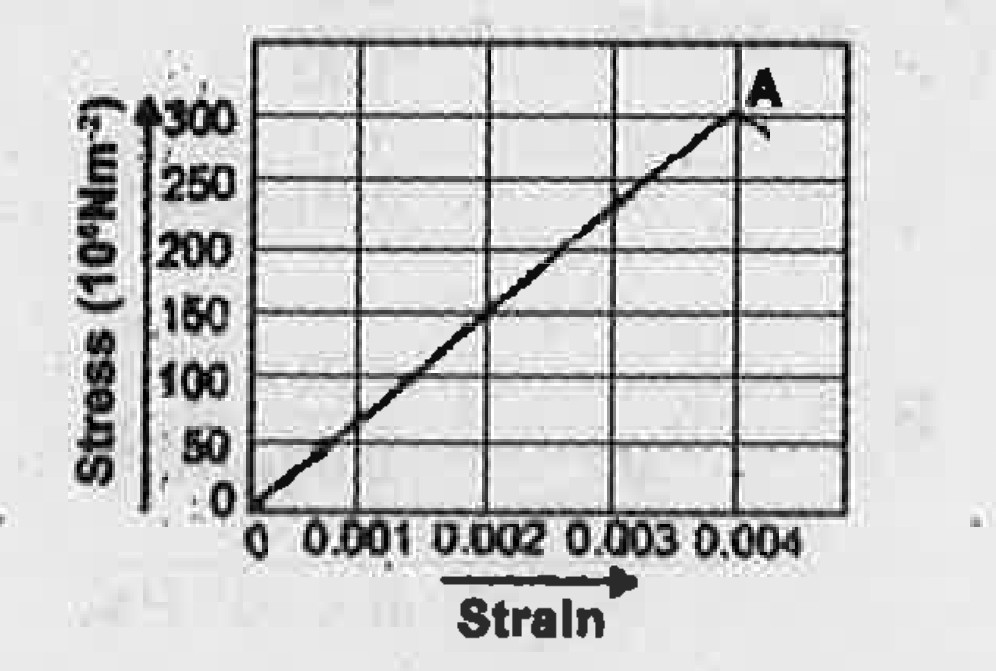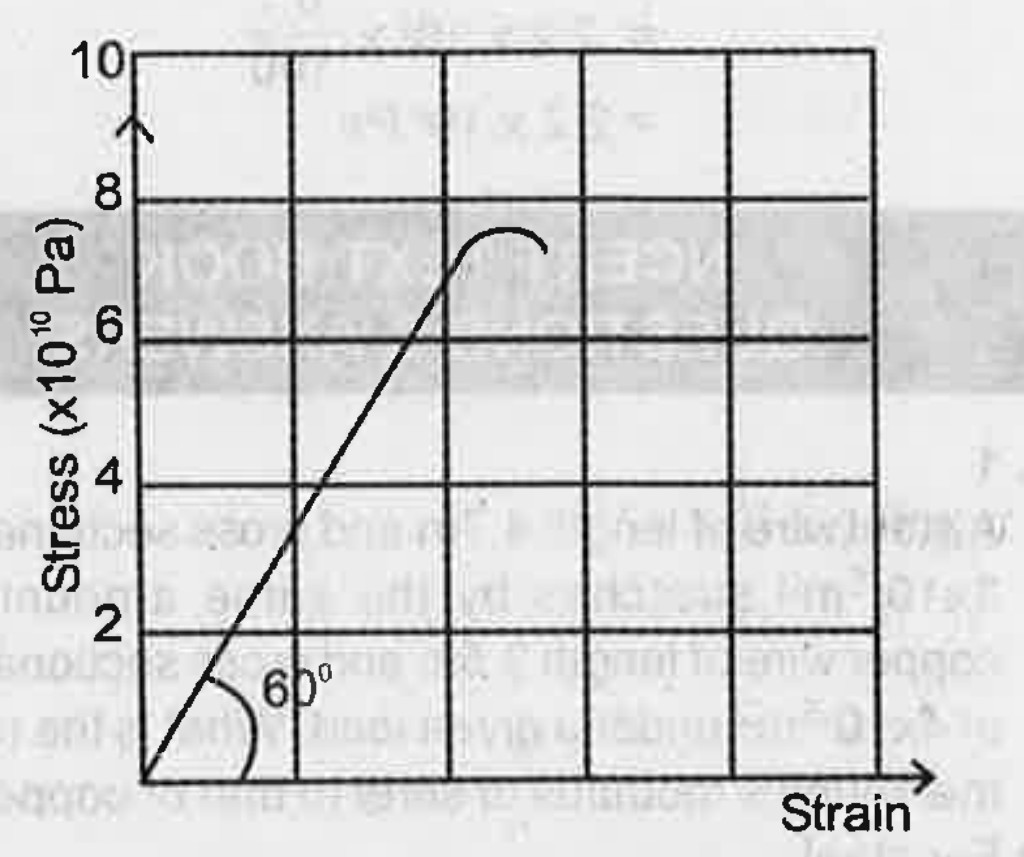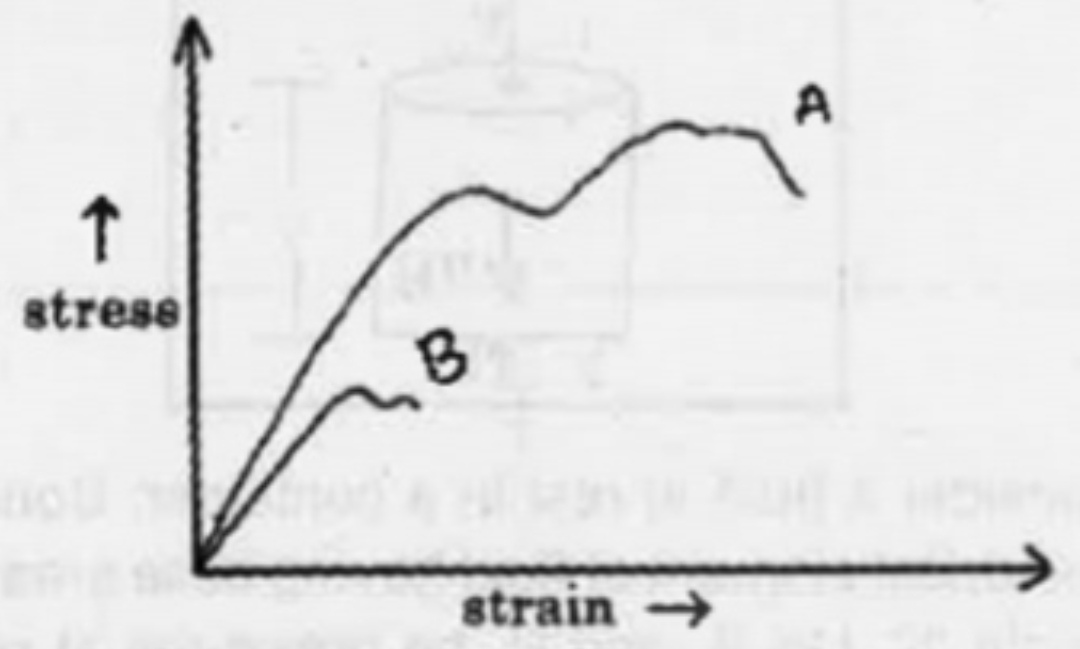Complete Solutions to EXERCISE of chapter MECHANICAL PROPERTIES OF SOLIDS of Class 11 book with complete answers and questions
| Class 11 | PHYSICS |
| Chapter | MECHANICAL PROPERTIES OF SOLIDS |
| MAXIMUM PUBLICATION | EXERCISE |
| Number Of Questions | 67 |
| Academic Year | 2023-24 |
Solids are least compressible but gases are most compressible. Why?
View SolutionFind the radius of the rope that used to lift `10tons(10000kg)`. Elastic limit (maximum stress) of steel is `30xx10^7 N/m^2` .
View SolutionWhat is meant by buckling?
View SolutionWhy the beams used in construction of bridges have a cross-section of the type I?
View SolutionFind the height of mountain from the data given below. Maximum shearing stress = `30xx10^7N/m^2`, Density of material of mountain= `3xx10^3kg*m^-3`
View SolutionIf longitudinal strain for a wire is `0*03` and its poisson's ratio is `0*5`, then its lateral strain is
View SolutionBetween steel and diamond, which is more elastic?
View SolutionWhat is the value of Y for a perfectly elastic body?
View SolutionYoung's modulus of the wire depends on
View SolutionFor most materials the Young's modulus is n times the rigidity modulus, where n is
View SolutionThe stress required to double the length of a wire of Young's modulus Y is
View SolutionWhat is the bulk modulus of a perfectly rigid body?
View SolutionWhat is shear modulus of liquid?
View SolutionWhat is the rigidity modulus of liquid?
View SolutionIdentify the type of modulus in twisting of cylinder.
View SolutionWhy work is required to be done to stretch a wire?
View SolutionName the material which is famous for a large elastic after-effect.
View SolutionFind stress required to double the length of a wire of Young's modulus Y.
View SolutionWhen wire is bent back and forth, it becomes hot. Why?
View SolutionHook's law is said to be that fundamentral law in elasticity. State Hook's law of Elasticity.
View SolutionHook's law is said to be the fundamental law in elasticity. Name the different types of modulus of elasticity with their equations.
View SolutionWhen an external force deforms a solid, internal restoring forces are developed in the body giving rise to stress and strain. Define stress and strain.
View SolutionWhen an external force deforms a solid, internal restoring forces are developed in the body giving rise to stress and strain. Draw the stress-strain diagram and mark the positions of elastic limit and the regions of elastic and plastic behaviors.
View SolutionDistinguish between perfectly plastic and perfectly elastic materials.
View SolutionWhat is the quantity obtained from the slope of a stress-strain graph and what is the area under the curve?
View SolutionTwo wires have their lengths in the ratio `1:3` and radius in the ratio `2:1`. What will be the ratio of elongations for the same linear stress?
View SolutionThe modulus of elasticity of rubber is higher than that steel. Do you agree with this statement? Why?
View SolutionThe modulus of elasticity of rubber is higher than that steel. Do you agree with this statement? Why?
View SolutionProve that the elastic potential energy density of a stretched wire is half the product of stress and strain.
View SolutionWe have common experience that a thin thread breaks if pulled at its ends. Also a thin metalic wire, when pulled at the ends elongates and then contracts, when released. What do you mean by elasticity?
View SolutionWhen an external force deforms a solid, internal restoring forces are developed in the body giving rise to stress and strain. Draw the stress-strain diagram and mark the positions of elastic limit and the regions of elastic and plastic behaviors.
View SolutionWe have common experience that a thin thread breaks if pulled at its ends. Also a thin metalic wire, when pulled at the ends elongates and then contracts, when released. A lift is tied with thick iron wires and its mass is `1000kg`. What should be the minimum diameter of the wire if the maximum acceleration of the lift is `1.2m/s^2` and maximum safe stress of the wire is `1.4xx10^8N/m^2` (g=`9.8m/s^2`)
View SolutionThe property of material bodies to regain its original size on the remaoval of deforming force is called elasticity. What is the value of Young's modulus for a perfectly rigid body?
View SolutionWhat is the rigidity modulus of liquid?
View SolutionThe property of material bodies to regain its original size on the removal of deforming force is called elasticity. Why do we prefer steel to copper in the manufacture of spring?
View SolutionThe property of material bodies to regain its original size on the removal of deforming force is called elasticity. How much should the pressure on a liter of water be changed to compress it by `0.10%`?(B=`2.2xx10^9N/m^2`)
View SolutionA steel wire of length `4.7m` and cross sectional area `2xx10^-5m^2` stretches by the same amount as a copper wire of length `3.5m` and cross sectional area of `4xx10^-5m^2` under a given load. What is the ratio of the Young's modulus of steel to that of copper?
View SolutionFollowing figure shows the strain-stress curve for a given material. What is Young's modulus for this material?

View SolutionThe edge of an aluminium cube is `10cm` long. One face of the cube is firmly fixed to a vertical wall. A mass of `100kg` is then attached to the opposite face of the cube. The shear modulus of aluminium is `15GPa`. What is the vertical deflection of this face?
View SolutionA steel cable with a radius `1.5cm` supports a chair lift. If the maximum stress is not to exceed `10^8Nm^-2`, what is the maximum load the cable can support?
View SolutionCompute the fractional change in volume of a glass slab when subjected to a hydraulic pressure of `10atm`. Given: Bulk modulus of elasticity of glass = `37xx10^9Nm^-2` and `1atm` = `1.013xx10^5Pa`.
View SolutionDetermine the volume contraction of a solid copper cube `10cm` on an edge, when subjected to a hydraulic pressure of `7xx10^6Pa`. Bulk modulus of copper = `140xx10^9Pa`.
View SolutionElasticity is an internal property of matter. Fluids possess volume elasticity. Which is more elastic, air or water? Why?
View SolutionElasticity is the property of a body by which it regains its original state on the removal of the deforming force. Why Steel is more elastic than Rubber?
View SolutionElasticity is the property of a body by which it regains its original state on the removal of the deforming force. The figure given below shows the stress-strain curve for a given material. What are the Youngs modulus and approximate yield strength for this material?

View SolutionWhen the pressure on a shpere s increased by `80` atmospheres, its volume decreases by `0.01%`. Find the bulk modulus of elasticity of the material of the sphere.
View SolutionWhen a mass is suspended on a metallic wire, the length of the wire increases slightly. Name and state the law that relates to the restoring force developed in the wire and its deformation.
View SolutionDraw the stress-strain graph of a loading wire. Mark the following points : i) Elastic limit ii) Fracture point iii) Plastic region iv) Elastic region
View SolutionWhen a mass is suspended on a metallic wire, the length of the wire increases slightly. If the Young's moduli of iron and glass are `190 xx 10^9 Nm^-2` and `65 xx 10^9 Nm^-2` respectively, which is more elastic ?Justify your answer.
View SolutionWhen a wire is stretched with a very large force it breaks. Represent the variation of extension with load on a graph.
View SolutionWhen a wire is stretched with a very large force it breaks. Discuss the behaviour of the wire at various stages.
View SolutionWhen a wire is stretched with a very large force it breaks. State Hooke's law. For which part of the the extension of a wire with a load graph, is Hooke's law applicable?
View SolutionElasticity is the property of a body by which it regains its original state on the removal of the deforming force. Why Steel is more elastic than Rubber?
View SolutionHooke's law states that stress `alpha` strain. What is the necessary condition for the above law to be valid?
View SolutionStress - Strain graph of two materials is shown below: State the law which relates stress with strain.

View SolutionMatch the following

View SolutionThe graph below shows how the force applied to a metal wire is related to the extension of the wire. The wire has an unstretched length of `2.30m` and an area of cross section of `3.90 xx 10^-7m^2`. Determine the Young's modulus `Y` of the material.

View SolutionName the law relating stress and strain.
View SolutionCalculate the stress developed in a metal wire when it is strained by `30%`. Given Young's modulus of material is `200 GPa`
View SolutionElasticity is the property of a body by which it regains its original state on the removal of the deforming force. Why Steel is more elastic than Rubber?
View SolutionA rigid body is a body with a perfectly unchanging shape under the influence of an external force. A rigid beam of length `L`, breadth `b` and depth `d` is supported near its ends. A load `W` is suspended at its center of mass. Write the expression for the amount of sagging.
View SolutionYoung's moduli of three materials are given in the above table. Select the material from the table, which shows more elasticity.

View SolutionThe stress-strain graph for wires of two materials A and B are given below. When spring balances are continuously used for long time, it shows wrong reading. Explain why.

View SolutionThe ratio of shear stress to shear strain is ...
View SolutionWhen a wire is stretched with a very large force it breaks. State Hooke's law. For which part of the the extension of a wire with a load graph, is Hooke's law applicable?
View SolutionA steel rod has a radius of `10 mm` and a length of `1.0 m.A` `100 kN` force stretches it along its length. Calculate the elongation of the steel rod. [Young's modulus of steel is `2.0×10^11N/m^2`]
View SolutionA metal cube of side `10 cm` is subjected to a shear stress `10^4 N/m^2`. Calculate the rigidity modulus, if the top of the cube is displaced by `0.05 cm` with respect to its bottom.
View Solution
EXERCISE questions and complete solutions for chapter MECHANICAL PROPERTIES OF SOLIDS of MAXIMUM PUBLICATION of Class 11